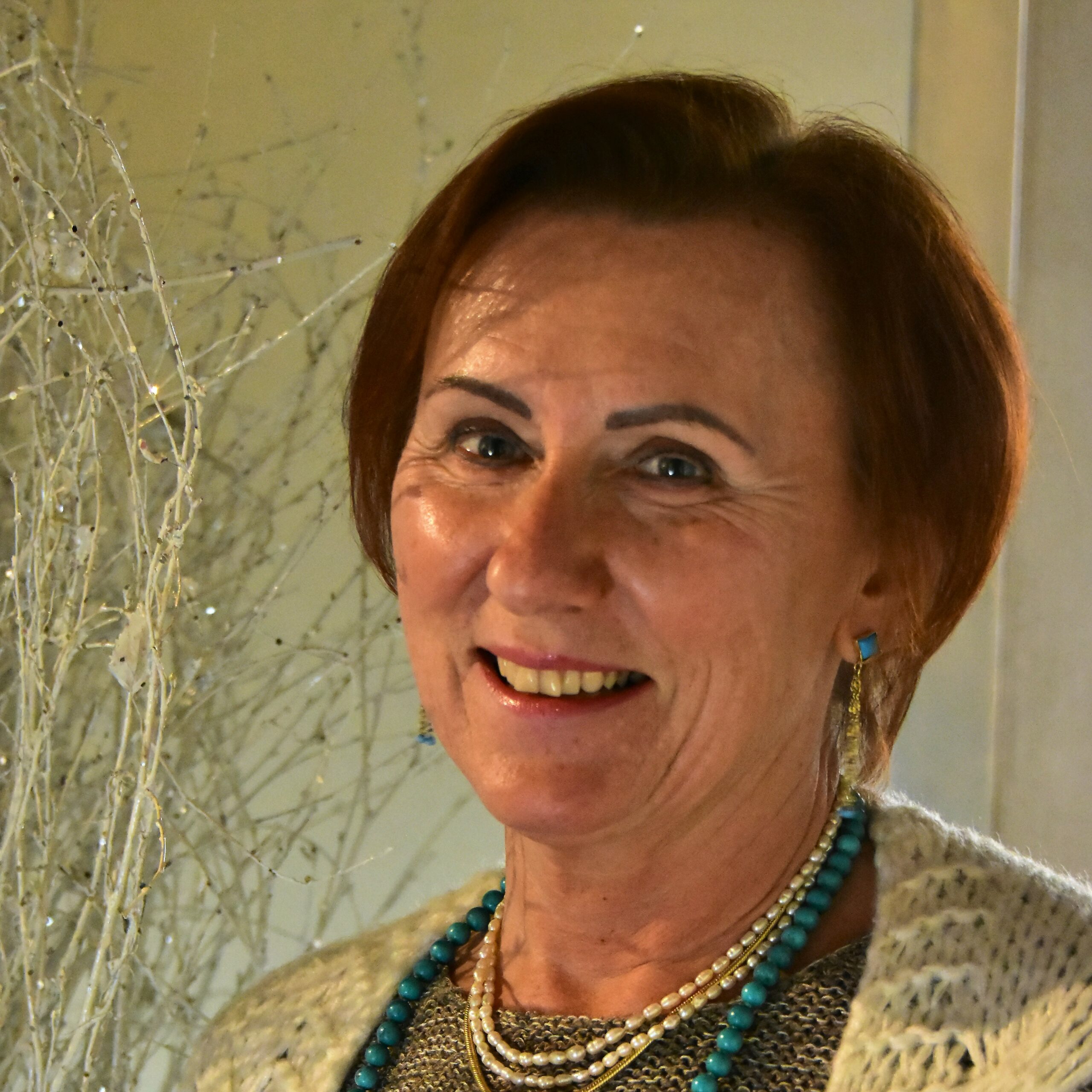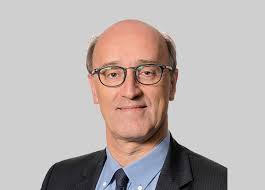touchPANEL DISCUSSION Treatment sequencing in multiple sclerosis: The benefits of disease-modifying therapies
Watch leading MS experts share their perspectives on treatment sequencing and the use of DMTs to optimize patient outcomes.

Prof. Gavin Giovannoni
Blizard Institute, Queen Mary University of London, UK
CHAIR
Panelists:
Introduction
Prof. Giovannoni introduces the faculty and agenda for this discussion on treatment sequencing in MS.
view bio and disclosures 1/4 Next ChapterTowards effective and meaningful monitoring of disease activity in MS
The faculty discusses the importance of defining and monitoring disease activity to inform treatment decisions in clinical practice.
view bio and disclosures 2/4 Next ChapterOptimizing individualized management in an expanding therapeutic landscape
The faculty discusses the evolution of treatment strategies in MS, and the importance of individualizing treatment according to patient and disease characteristics.
view bio and disclosures 3/4 Next ChapterSafety and immunologic considerations associated with DMTs
The faculty discusses how to de-risk therapies prior to initiation, and how treatment sequencing is imperative to mitigate risks associated with DMTs.
view bio and disclosures 4/4 Take CE/CME TestOverview & Learning Objectives
Overview
In this activity, three leading experts share their perspectives on treatment sequencing in multiple sclerosis and how early initiation of disease-modifying therapies, individualized according to disease and patient characteristics, can optimize outcomes.
This activity is jointly provided by USF Health and touchIME. read more
Target Audience
This activity has been designed to meet the educational needs of general neurologists, MS specialists, MS nurses, primary care physicians (PCPs) involved in the management of MS.
Disclosures
USF Health adheres to the Standards for Integrity and Independence in Accredited Continuing Education. All individuals in a position to influence content have disclosed to USF Health any financial relationship with an ineligible organization. USF Health has reviewed and mitigated all relevant financial relationships related to the content of the activity. The relevant relationships are listed below. All individuals not listed have no relevant financial relationships.
Faculty
Prof. Gavin Giovannoni discloses: Consultation/advisory role fees from AbbVie, Aslan, Atara Bio, Biogen, BMS-Celgene, Bristol Myers Squibb, Genentech, GlaxoSmithKline, GW Pharma, Janssen-Actelion, LifNano, Merck, Merck-Serono, Novartis, Roche, Sanofi-Genzyme and Teva. Grants/research support from Merck KGaA, Roche and Takeda.
Dr Eva Havrdová discloses: Speaker and consultant honoraria/compensation for advisory board participation from Biogen, Janssen, Merck, Novartis, Roche and Teva.
Prof. Patrick Vermersch discloses: Consultant/advisory board participation/research support from AB Science, Bristol Myers Squibb, Imcyse, Merck, Novartis, Roche, Sanofi and Teva.
Content reviewer
Angela Hill has no financial interests/relationships or affiliations in relation to this activity.
Touch Medical Director
Holly Gilbert-Jones has no financial interests/relationships or affiliations in relation to this activity.
USF Health Office of Continuing Professional Development and touchIME staff have no financial interests/relationships or affiliations in relation to this activity.
Requirements for Successful Completion
In order to receive credit for this activity, participants must review the content and complete the post-test and evaluation form. Statements of credit are awarded upon successful completion of the post-test and evaluation form.
If you have questions regarding credit please contact cpdsupport@usf.edu.
Accreditations
Physicians
This activity has been planned and implemented in accordance with the accreditation requirements and policies of the Accreditation Council for Continuing Medical Education (ACCME) through a joint providership of USF Health and touchIME. USF Health is accredited by the ACCME to provide continuing medical education for physicians.
USF Health designates this enduring material for a maximum of 0.75 AMA PRA Category 1 CreditTM. Physicians should claim only the credit commensurate with the extent of their participation in the activity.
The European Union of Medical Specialists (UEMS) – European Accreditation Council for Continuing Medical Education (EACCME) has an agreement of mutual recognition of continuing medical education (CME) credit with the American Medical Association (AMA). European physicians interested in converting AMA PRA Category 1 CreditTM into European CME credit (ECMEC) should contact the UEMS (www.uems.eu).
Advanced Practice Providers
Physician Assistants may claim a maximum of 0.75 Category 1 credits for completing this activity. NCCPA accepts AMA PRA Category 1 CreditTM from organizations accredited by ACCME or a recognized state medical society.
The AANPCP accepts certificates of participation for educational activities approved for AMA PRA Category 1 CreditTM by ACCME-accredited providers. APRNs who participate will receive a certificate of completion commensurate with the extent of their participation.
Date of original release: 4 July 2022. Date credits expire: 4 July 2024.
If you have any questions regarding credit please contact cpdsupport@usf.edu.
Learning Objectives
After watching this activity, participants should be better able to:
- Explain the factors that drive therapeutic inertia in MS
- Analyse the evidence for starting DMT early in patients with MS
- Perform adverse event management for patients receiving DMT
Faculty & Disclosures

Prof. Gavin Giovannoni
Blizard Institute, Queen Mary University of London, UK
Gavin Giovannoni is professor of neurology at the Blizard Institute, Barts and The London School of Medicine and Dentistry, Queen Mary University of London, and the Department of Neurology, Barts Health NHS Trust. read more
His clinical interests are multiple sclerosis (MS) and other inflammatory disorders of the central nervous system. He is particularly interested in clinical issues related to optimizing MS disease-modifying therapies. His current research is focused on Epstein–Barr virus as a possible cause of MS, defining the ‘MS endophenotype’, MS-related neurodegeneration, biomarker discovery and validation, and MS clinical outcomes. His team focuses on translational research and, therefore, has an active clinical trial programme.
Prof. Gavin Giovannoni discloses: Consultation/advisory role fees from AbbVie, Aslan, Atara Bio, Biogen, BMS-Celgene, Bristol Myers Squibb, Genentech, GlaxoSmithKline, GW Pharma, Janssen-Actelion, LifNano, Merck, Merck-Serono, Novartis, Roche, Sanofi-Genzyme and Teva. Grants/research support from Merck KGaA, Roche and Takeda.

Prof. Eva Havrdová
General Faculty Hospital, Charles University in Prague, Czech Republic
Eva Havrdová is professor of neurology at the General Faculty Hospital, Charles University in Prague, Czech Republic. read more
Her research interests include cytokine, immunoglobulin and T-cell research in multiple sclerosis (MS) and the treatment of malignant MS. Prof. Havrdová created the ‘freedom from disease activity’ concept now used to compare the efficacy of MS drugs. She has published more than 100 publications on MS, including Neuroimmunology, Multiple Sclerosis, Handbook on MS for General Practitioners, Pharmacotherapy of MS and several books for patients.
She organized the ECTRIMS congress in Prague in 2007, is a member of the MSIF International Medical and Scientific Board, and a member of the Czech Neurological Society Committee. She introduced disease-modifying treatment in MS in the Czech Republic and established a network of MS centres covering the entire country. She developed Standards of Diagnostics and Treatment of MS and neuromyelitis optica in the Czech Republic.
Dr Eva Havrdová discloses: Speaker and consultant honoraria/compensation for advisory board participation from Biogen, Janssen, Merck, Novartis, Roche and Teva.

Prof. Patrick Vermersch
Lille University Hospital, France
Patrick Vermersch is professor of neurology in the Department of Neurology at the University of Lille, France, and vice president for research in biology and health at the University of Lille. read more
Prof. Vermersch studied medicine at the University Hospital in Lille, France, where he graduated in neurology. He then completed his education in more basic research fields, mainly in cellular biology between 1990 and 1994 with a PhD focused on biochemical abnormalities associated with Alzheimer’s disease and other neurodegenerative diseases. He has also conducted research related to the characterizations of post-transcriptional anomalies of Tau proteins. His research interests then turned to multiple sclerosis (MS). In the year 2000, he created with colleagues the first MS network in northern France to improve both the care of patients and research into MS.
Prof. Vermersch works in the Department of Neurology at the University of Lille, which deals with MS and other neuroinflammatory diseases. The department’s principal scientific interests are neuroimmunology and markers of disease evolution. In 2019, he became a board member of the European Charcot Foundation.
Prof. Patrick Vermersch discloses: Consultant/advisory board participation/research support from AB Science, Bristol Myers Squibb, Imcyse, Merck, Novartis, Roche, Sanofi and Teva.

Register to touchNEUROLOGY for FREE
- Peer-reviewed journals and expert opinions
- Interactive CME and e-learning modules
- Video conference highlights
